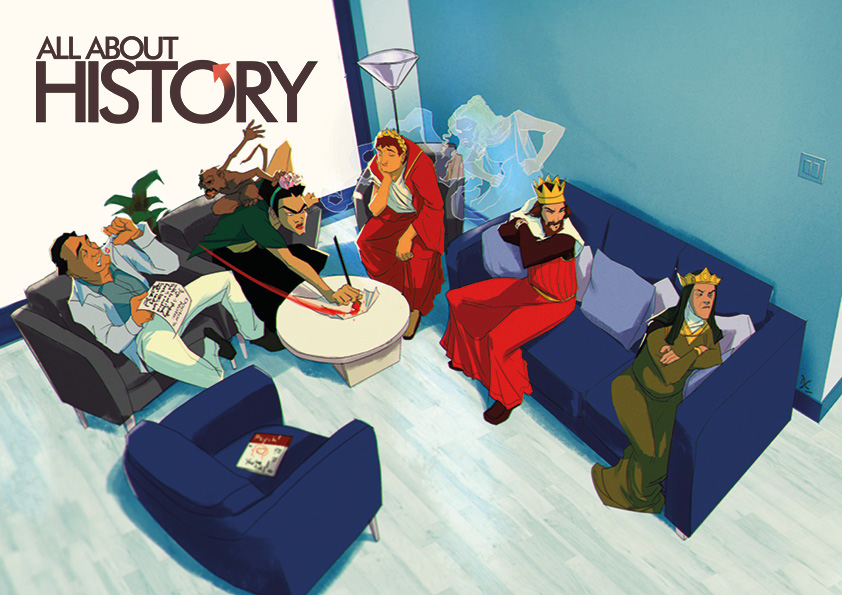Couples from the past whose coming together often ruined more than just their own lives
Subscribe to All About History now for amazing savings!
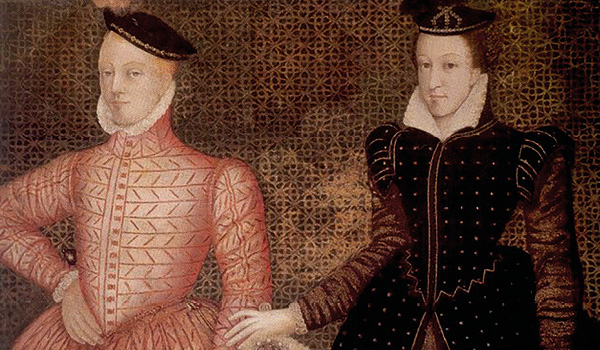
Mary, Queen of Scots & Henry Stuart: An explosive romance
Length of Relationship: two years
When Mary, Queen of Scots decided to marry her first cousin, Henry Stuart, Lord Darnley, in 1565, it seemed like a clever move. Like her, Darnley had his own claim to the English throne and their marriage bolstered Mary’s attempts to be officially named as her cousin Queen Elizabeth’s heir in England. The fact that he was tall and handsome was an added bonus. However, Darnley was an arrogant and violent man who demanded that he should be named King of Scots and Mary’s equal co-ruler, which angered both the queen and the Scottish nobles. The marriage quickly disintegrated and Darnley, incensed that he was not being given the power he demanded, took matters into his own hands. On 9 March 1566, he stormed into the queen’s private dining room with his supporters and stabbed her secretary and confidante, David Rizzo, to death in front of Mary, who was pregnant with Darnley’s baby. Almost a year later in February 1567, there was an explosion at Kirk O’Field house and Darnley’s body was found in the orchard, with no markings to show that the blast had killed him. It was quickly concluded that he had been murdered and many believed that Mary ordered his assassination.
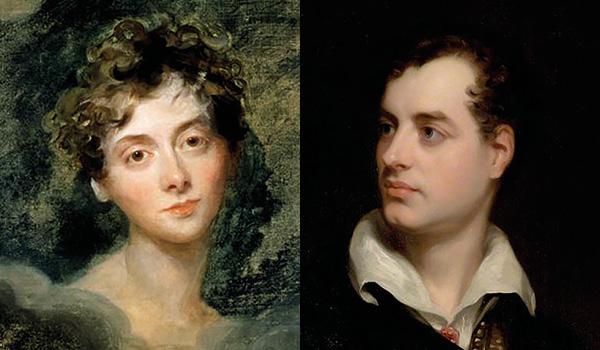
Lord Byron & Lady Caroline Lamb: A disaster in the making
Length of Relationship: Six Months
Lord Byron and Lady Caroline Lamb, the wife of future Prime Minister Lord Melbourne, scandalised Georgian society with their public and passionate affair between March and August 1812. When she set her eyes on him for the first time, Caroline declared Byron was “mad, bad and dangerous to know”. Nonetheless, they soon became lovers. Their affair was intense and full of jealousy, leading to frequent arguments, and soon enough Byron ended it. Caroline’s husband took her to Ireland but when she returned to London in 1813 she tried to reignite the affair. In their first meeting since their break up, Byron rebuked Caroline and she responded by slashing her wrists. Her unstable behaviour continued and she made numerous attempts to visit Byron at his home, even writing ‘Remember Me!’ in one of his books. In response, Byron wrote the poem Remember Thee! Remember Thee! which included the line: “Remember thee! Ay, doubt it not. Thy husband too shall think of thee! By neither shalt thou be forgot, Thou false to him, thou fiend to me!” Byron married Caroline’s cousin Annabella Milbanke in 1815 and in 1816 Caroline published her popular novel Glenarvon, a thinly veiled attack on Byron and other members of society.
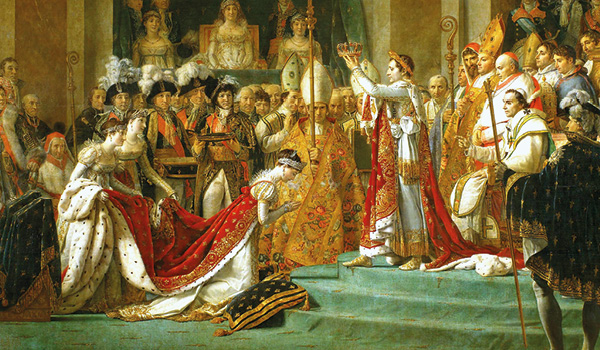
Napoleon & Joséphine: A torrid love that lasted
Length of Relationship: 14 years
The love story of Napoleon and Joséphine is often celebrated for being passionate and romantic, but in reality it was also tumultuous and intense. They first met at a society ball thrown by Paul Barras, Joséphine’s lover and Napoleon’s mentor, in 1795. Napoleon was immediately enthralled with Joséphine, who was six years older than him, and they married in a civil ceremony in Paris in 1796. Just a couple of days later, Napoleon left on his first Italian campaign but he sent his bride numerous ardent and lovesick letters, which she frequently left unanswered while pursuing affairs and racking up debts at home. When he heard rumours of her unfaithfulness, Napoleon bitterly wrote to her: “I don’t love you; on the contrary, I detest you…” and began his own affair. Despite his words, Napoleon still loved Josephine but he could no longer trust her, although she eventually remained faithful to him. Ultimately, the biggest issue the couple faced was the fact that Joséphine had failed to give Napoleon the heir he needed and so he decided to divorce her in November 1809, news which caused her to collapse on the floor. Although their relationship ended, Napoleon still cared for Joséphine and he ensured that she was financially secure for the rest of her life. When she died in 1814, Napoleon locked himself away for two days and it is said that his last words on his deathbed were: “France, the army, head of the army… Joséphine.”
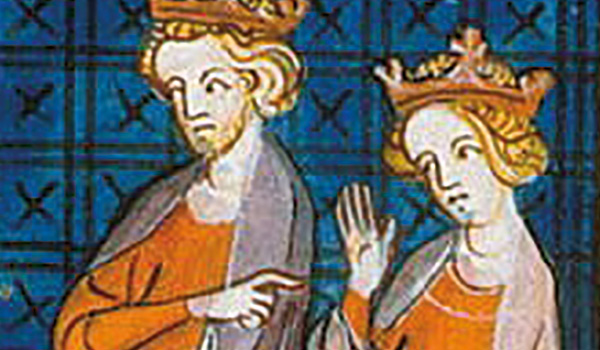
King Henry II of England & Queen Eleanor of Aquitaine: A clash of personalities
Length of Relationship: 37 Years
She was the Duchess of Aquitaine in her own right, wealthy and powerful and a former queen of France, while he was the Count of Anjou and Duke of Normandy, and heir to the English throne. On the surface, it seemed that Eleanor and Henry had everything they needed to become a medieval power couple. Their sudden marriage in 1152, just eight weeks after Eleanor’s divorce from King Louis VII of France, was controversial and whether it was a quick decision – or premeditated – is still debated today. They had five sons and three daughters but, despite securing their dynasty, Eleanor and Henry had a tumultuous relationship and argued frequently, possibly because of his affairs. In 1168, they separated and Eleanor returned to Poitiers in Aquitaine to govern her territory, until her younger sons arrived in 1173 after rebelling against their father. Accused of supporting them, Eleanor was placed under house arrest by her estranged husband, where she remained until her son, Richard, released her in 1189 after Henry’s death.
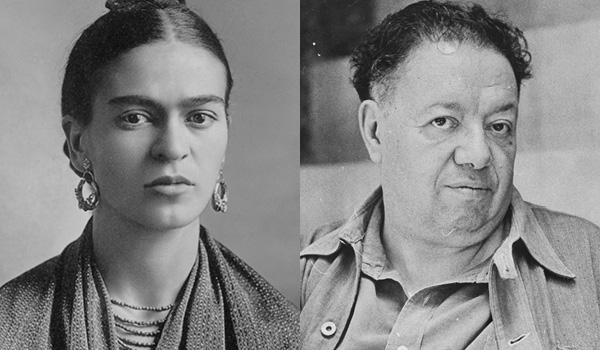
Frida Kahlo & Diego Rivera: When opposites attract
Length of Relationship: 24 Years
To say that Frida Kahlo and Diego Rivera, two of the greatest artists in Mexico and indeed, the 20th century, had a complicated relationship is an understatement. The couple briefly met in 1922 when Kahlo was 15 and Rivera was 36, and three years later Kahlo was seriously injured in a bus accident that would leave her in lifelong pain. To pass the time during her recovery, she took up painting. In 1928, Kahlo reconnected with Rivera after she joined the Mexican Communist Party, and she showed him her art and he encouraged her talent. The pair quickly developed a romantic relationship and they married in 1929, with Kahlo’s parents describing them as ‘the Elephant and the Dove’ because of their differences in size. The artists truly loved each other but they were both unfaithful, leading to numerous jealous fights, but it was Rivera’s affair with his sister-in-law that left Kahlo deeply hurt and the couple divorced in 1939, only to remarry a year later. Their relationship can be seen through the artwork they produced, particularly Kahlo’s emotive self-portraits and her profound letters to Rivera. They remained married until Kahlo’s early death in 1954, which left Rivera devastated.
Banner image by David Cousens
Read more in All About History 87, still available to order online here
Subscribe to
All About History now for amazing savings!


